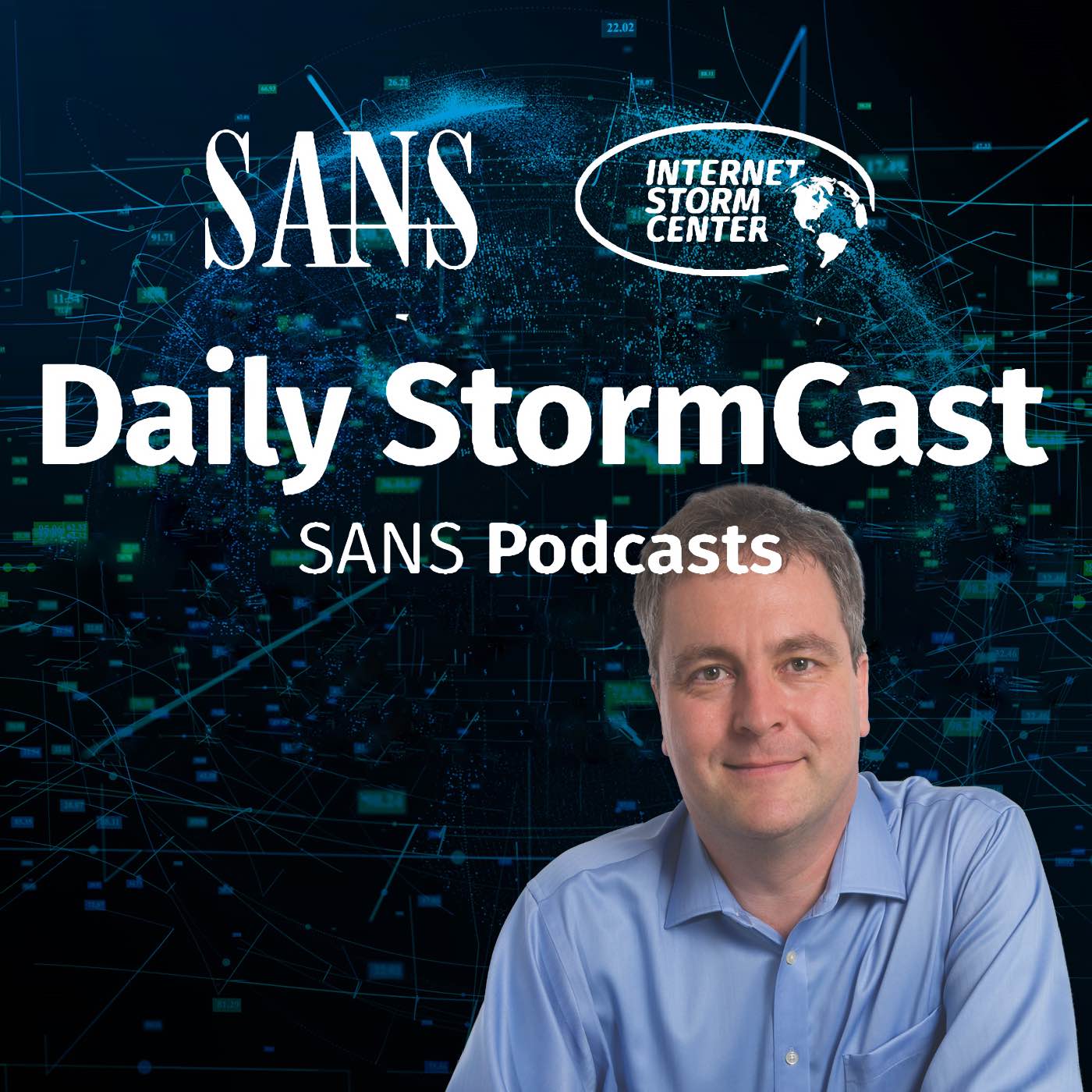Handler on Duty: Xavier Mertens
Threat Level: green
Podcast Detail
SANS Stormcast Tuesday, May 20th 2025: AutoIT Code RAT; Fake Keepass Download; Procolored Printer Software Compromise
If you are not able to play the podcast using the player below: Use this direct link to the audio file: https://traffic.libsyn.com/securitypodcast/9458.mp3
My Next Class
| Network Monitoring and Threat Detection In-Depth | Online | Central European Time | Dec 15th - Dec 20th 2025 |
| Application Security: Securing Web Apps, APIs, and Microservices | Orlando | Mar 29th - Apr 3rd 2026 |
RAT Dropped By Two Layers of AutoIT Code
Xavier explains how AutoIT was used to install a remote admin tool (RAT) and how to analyse such a tool
https://isc.sans.edu/diary/RAT%20Dropped%20By%20Two%20Layers%20of%20AutoIT%20Code/31960
RVTools compromise confirmed
Robware.net, the site behind the popular tool RVTools now confirmed that it was compromised. The site is currently offline.
https://www.robware.net/readMore
Trojaned Version of Keepass used to install info stealer and Cobalt Strike beacon
A backdoored version of KeePass was used to trick victims into installing Cobalt Strike and other malware. In this case, Keepass itself was not compromised and the malicious version was advertised via search engine optimization tricks
https://labs.withsecure.com/publications/keepass-trojanised-in-advanced-malware-campaign
Procolored UV Printer Software Compromised
The official software offered by the makers of the Procolored UV printer has been compromised, and versions with malware were distributed for about half a year.
https://www.hackster.io/news/the-maker-s-toolbox-procolored-v11-pro-dto-uv-printer-review-680d491e17e3
https://www.gdatasoftware.com/blog/2025/05/38200-printer-infected-software-downloads
Discussion
New Discussions closed for all Podcasts older than two(2) weeks
Please send your comments to our Contact Form
| Network Monitoring and Threat Detection In-Depth | Online | Central European Time | Dec 15th - Dec 20th 2025 |
| Application Security: Securing Web Apps, APIs, and Microservices | Orlando | Mar 29th - Apr 3rd 2026 |
| Network Monitoring and Threat Detection In-Depth | Amsterdam | Apr 20th - Apr 25th 2026 |
| Application Security: Securing Web Apps, APIs, and Microservices | San Diego | May 11th - May 16th 2026 |
| Network Monitoring and Threat Detection In-Depth | Online | Arabian Standard Time | Jun 20th - Jun 25th 2026 |
| Network Monitoring and Threat Detection In-Depth | Riyadh | Jun 20th - Jun 25th 2026 |
| Application Security: Securing Web Apps, APIs, and Microservices | Washington | Jul 13th - Jul 18th 2026 |
Podcast Transcript
Hello and welcome to the Tuesday, May 20th, 2025 edition of the SANS Internet its Storm Center's Stormcast. My name is Johannes Ulrich and this episode brought to you by the SANS EDU Graduate Certificate Program in Cybersecurity Leadership was recorded in Jacksonville, Florida. In today's diary, we got Xavier taking apart a remote access tool. This remote access tool starts out with scripts written in AutoIT. This is something that keeps coming up. It's not a new technique at all, but something I think that's often overlooked, AutoIT is a language designed to, well, roll out configurations, remote managed machines. And that's exactly what the bad guys take advantage of here. In particular, since these scripts can also be compiled into self-contained executables, not requiring the victim to already have AutoIT installed. In the past, of course, we have seen a couple examples where the actor would also install AutoIT on the system for the victim. But that's not the case here with what Xavier saw. It also enables some simple persistence by adding itself as a startup item and then essentially connects to a remote control server, some command control server that luckily is no longer accessible. From a defensive point of view, you probably don't want to outright block AutoIT because it is a useful tool unless you're not using it in your environment. And other than that, well, it comes back to downloading executables, letting users execute random executables. Never a good idea. And last week, I talked about the unfortunate incident around RVTools, the VMware analysis tool set. Well, there was some confusion whether or not it was actually just a malicious version downloaded from some other random site or whether the actual RVTools website was compromised. We now got confirmation from rawware.net, the entity behind RVTools, that yes, their website was compromised and the website is currently shut down. Now, in different news, we have a similar incident around KeePass. But in this case, it's not that KeePass itself was compromised. This appears to be a pure search engine optimization attack. The news about KeePass comes from researchers at WithSecure Labs. And the news actually broke about a week ago. Thanks for listeners to actually alert me of this news. The problem here was that someone essentially took the KeePass source code, which is open source, so nothing leaked here, and recompiled it with additional add-ons, in particular InfoSteelers and Cobalt Strike Beacon. This apparently happened several times back to sort of mid 2024. So almost like six months ago when all of this started, there were several iterations where only the last iteration then had all the goodies sort of being integrated into KeePass. With KeePass being a password store, that, of course, makes it sort of a prime target. Now, yes, this was solely a search engine optimization attack. So there was no compromise of the website or any built infrastructure. So off KeePass. And one of the pointers that, well, this was the case, was that the certificate used to sign the KeePass binary, the malicious one, was from an unrelated company, apparently stolen from a random Chinese company that was then used to sign this binary. So that's something, if the attacker would have had access to the built infrastructure or anything like this around KeePass, they probably would have signed that with the proper KeePass signature. This is, again, be careful, very download your software, in particular things like password managers. This could happen to any software, not just the password managers, but, of course, being able to get into someone's password managers makes that sort of a prime target. And I guess today I have sort of a supply chain theme here to the podcast. The next example is this UV printer by Procolored. Well, this is not a cheap device. It's, I guess, called Prosumer. It's sort of a few thousand dollars. And if you purchased this particular printer, the software was delivered with the printer, well, apparently contained multiple viruses. This was first found here by the blog post on this website, hackster.io. This is more supposed to be a product review of this particular printer. But, well, the review kind of stalled because the initial downloads of the software and the install was blocked by Microsoft Defender and also the browsers built in protections. Later analysis of the software by Carsten Hahn here did show that, yes, it was indeed malicious what was being offered here by the vendor. It took a while to get a response out of the vendor. And overall, it appears that this malicious software was included for about half a year. So if you own any of these printers, definitely be careful. Double check your systems. And if you ever download a software and antivirus goes off, I know it's hard, but it may not be a false positive. So better pay attention. Double check. And, yeah, sadly, of course, the truth is sometimes there are false positives. As I'm recording this podcast, I'm sure when I'm saving my show notes that Microsoft Defender will flag the file as suspicious just because of some of the links in the file. At least that's what I suspect. Well, and this is it for today. So thanks for listening and talk to you again tomorrow. Bye.











